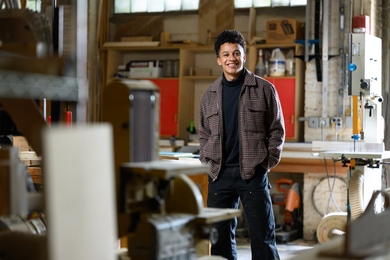CAPTURING CO2 FROM POWER PLANTS?
One way to reduce emissions of greenhouse gases is to capture and permanently store the carbon dioxide (CO2) emitted by electric power plants burning fossil fuels. However, current methods of capturing CO2 are expensive.
Energy Laboratory researchers led by principal research engineer Howard Herzog have performed a methodical study of projected costs for capturing CO2 from three types of power plants, two fueled by coal and one by natural gas. According to their analyses, capturing CO2 could push up the cost of generating electricity from 3.3kWh to 5.2kWh at a natural gas plant and from 4.6kWh to 6.0kWh at a coal plant based on gasification.
At those costs, carbon capture promises to be a less expensive near-term option for carbon mitigation than switching to solar and perhaps nuclear power. With technological advances expected by 2012, incorporating capture could add less than 1���/kWh to the cost of electricity. Increasing power plant efficiency could reduce the cost of capture substantially.
The researchers are now performing more rigorous analyses of how CO2 capture compares to other carbon mitigation options under various assumptions about the future. This research was supported by the DOE.
Nancy Stauffer, Energy Lab
NEXT-GENERATION BAR CODE
MIT researchers are working on the next generation of the Universal Product Code (UPC), better known as the bar code found on most manufactured products.
Professors Kai-Yeung (Sunny) Siu and Sanjay Sarma of mechanical engineering with Dr. David Brock of the Laboratory for Manufacturing and Productivity are designing an industrial application that will employ low-cost, electromagnetically coupled tags to improve product tracking and supply chain management. Using this system, tagged products will be identifiable to reader devices which are themselves hooked up to a computerized local area network (LAN). The LAN can be connected to the Internet, allowing objects to be traced from anywhere in the world.
The bar code's limitation as it currently stands is that it has to be manually scanned&emdash;on the shelf the code is useless. By replacing bar codes with electromagnetic tags, companies will be able to monitor product movement continually, from manufacture to disposal, in real time. Eventually, shoppers will bypass checkout counters altogether as the prices of their tagged purchases are automatically debited from their accounts on their way out the door.
This project is administered by the Auto-ID Center (AIDC), a consortium of academic and industry partners of which Professor Siu is director. It will be featured at an MIT Industrial Liaison Program conference April 12-13 called "Smart World in the New Millennium."
Charles Schmidt, MIT Report
A version of this article appeared in MIT Tech Talk on March 29, 2000.





